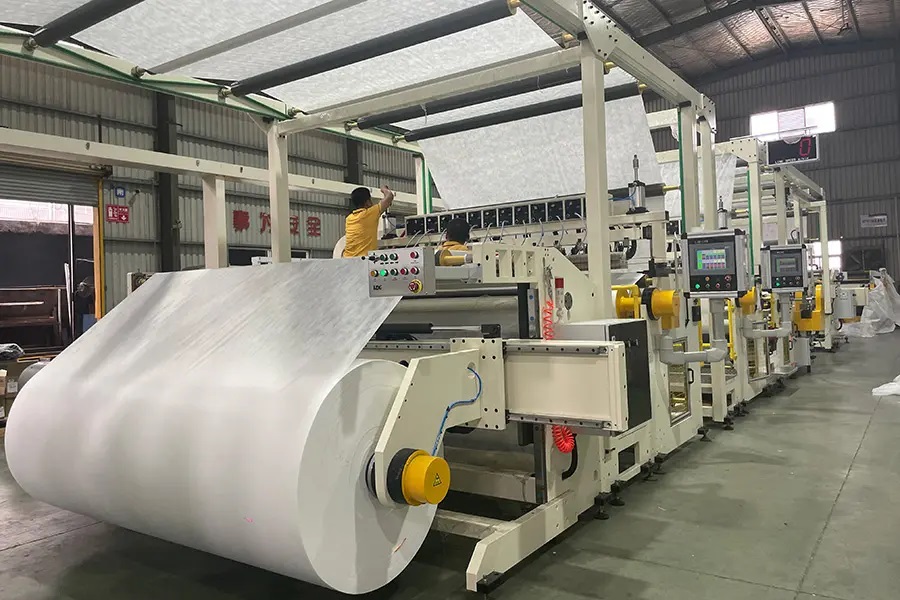In the bustling world of the manufacturing industry, durability isn’t just a quality; it’s a necessity. Amidst the clanging of machinery and the meticulous work of engineers, there lies an unsung hero that significantly contributes to the longevity and resilience of products: the laminating system. This piece of technology, though often overlooked, plays a pivotal role in enhancing the durability and functionality of materials, thereby elevating the standard of various projects.
The Essence of Lamination in Manufacturing
Lamination is a process that involves bonding layers of materials together to create a composite material that is stronger, more durable, and often more aesthetically pleasing. This technique is widely used across numerous sectors within the manufacturing industry, including automotive, aerospace, electronics, and packaging, to name a few.
The right laminating system can transform a simple material into a robust, long-lasting product capable of withstanding harsh environments, mechanical stresses, and everyday wear and tear. This is not just about adding a protective layer; it’s about enhancing the material’s intrinsic properties, such as its resistance to water, chemicals, UV light, and even fire.
The Benefits of High-Quality Laminating Systems
Investing in a high-quality laminating system comes with a multitude of benefits that can significantly impact the success of manufacturing projects:
- Enhanced Durability: By bonding materials with a protective layer, products gain increased resistance to environmental factors and physical damage.
- Improved Aesthetics: Lamination can enhance the visual appeal of a product, offering a glossy or matte finish that adds to its marketability.
- Cost-Effectiveness: Laminated products often require less maintenance and have a longer lifespan, providing cost savings in the long term.
- Versatility: Modern laminating systems are capable of handling a wide range of materials, including paper, plastic, metal, and fabric, making them suitable for diverse manufacturing needs.
Choosing the Right Laminating System
Selecting the appropriate laminating system is crucial for achieving the desired outcome in any project. Here are some factors to consider:
- Material Compatibility: Ensure the system is suitable for the types of materials you intend to laminate.
- Speed and Efficiency: Look for a system that aligns with your production demands without compromising on quality.
- Ease of Use: A user-friendly interface and straightforward operation can greatly enhance productivity.
- Durability and Reliability: Opt for a system known for its longevity and minimal downtime to ensure continuous operation.
The Impact on the Manufacturing Industry
The integration of effective laminating systems within manufacturing processes has led to the development of products that are not only more durable and reliable but also more innovative. From the automotive industry, where laminated materials contribute to the safety and comfort of vehicles, to the electronics sector, where they protect delicate components from moisture and dust, the influence of lamination is pervasive and profound.
Moreover, the environmental aspect cannot be overlooked. With the growing emphasis on sustainability, the manufacturing industry is increasingly leaning towards laminating solutions that are eco-friendly, utilising recyclable materials and reducing waste.
In Conclusion
The right laminating system is a game-changer in the manufacturing industry, offering a blend of durability, aesthetics, and efficiency that can significantly elevate the quality and longevity of various projects. It’s not just about protecting a product; it’s about unlocking its full potential, ensuring it stands the test of time and meets the ever-evolving demands of the market.
In a world where the durability of a product can be the deciding factor in its success, understanding and utilising the power of a high-quality laminating system can be the key to achieving excellence in manufacturing.


 Using SQL for Bayesian Inference: Building Probabilistic Models with Data
Using SQL for Bayesian Inference: Building Probabilistic Models with Data  Why do people love the surprises in online slot games?
Why do people love the surprises in online slot games?  Can shockwave for ED help men with high cholesterol?
Can shockwave for ED help men with high cholesterol?  Feeding Sheep Through the Seasons: Changing diets for summer and winter
Feeding Sheep Through the Seasons: Changing diets for summer and winter  Role of CBD Vape Pens in Natural Pain Relief?
Role of CBD Vape Pens in Natural Pain Relief?  Simple Steps to Prevent Burnout Before It Takes a Toll
Simple Steps to Prevent Burnout Before It Takes a Toll  Why Low-Acid Organic Coffee is the Perfect Choice for Sensitive Stomachs?
Why Low-Acid Organic Coffee is the Perfect Choice for Sensitive Stomachs?  Which Ayurvedic Medicine is the Best Tablet for Piles?
Which Ayurvedic Medicine is the Best Tablet for Piles?  Discover the Latest Hits on Zee5: Must-Watch Movies and Series
Discover the Latest Hits on Zee5: Must-Watch Movies and Series 